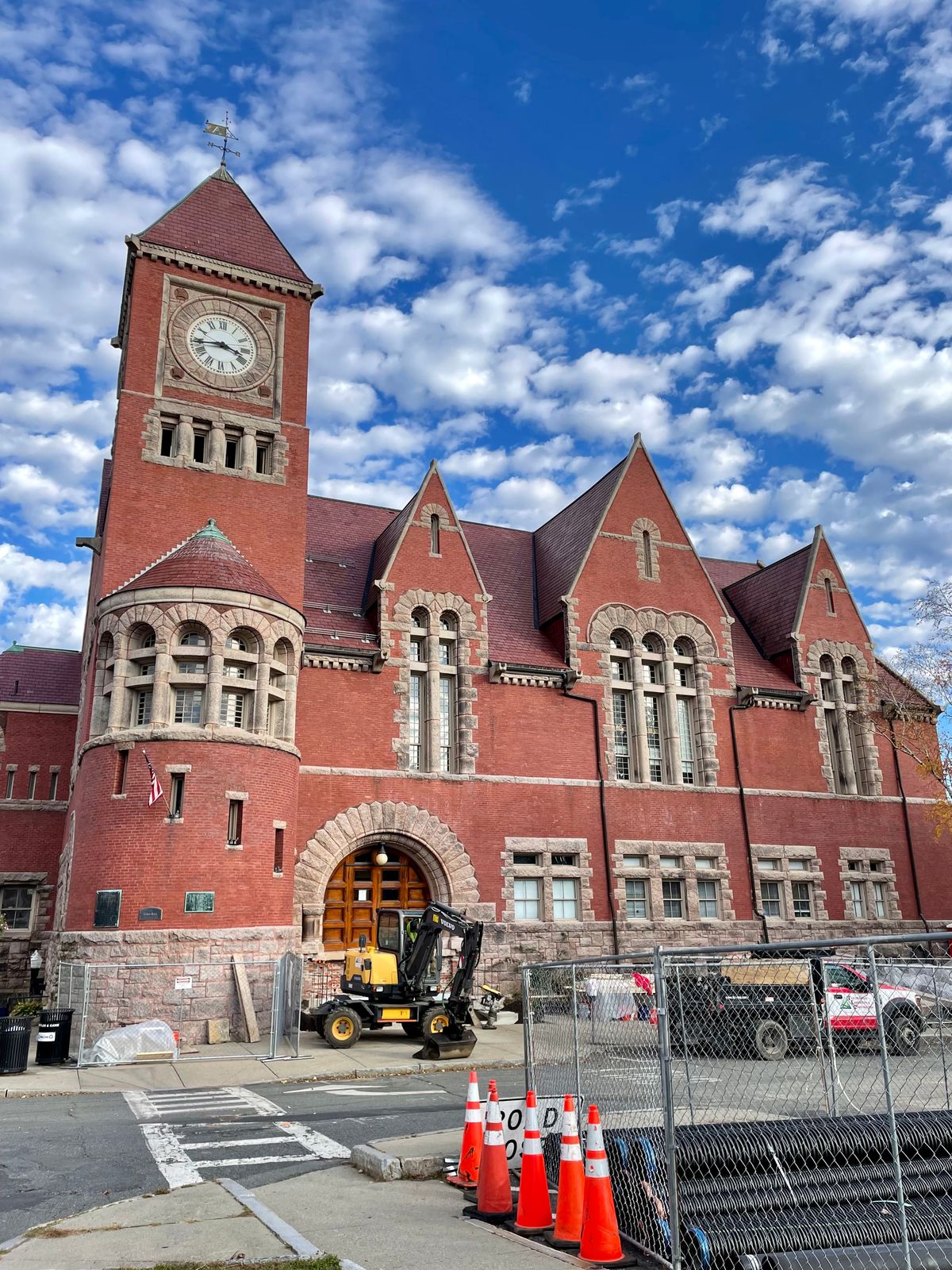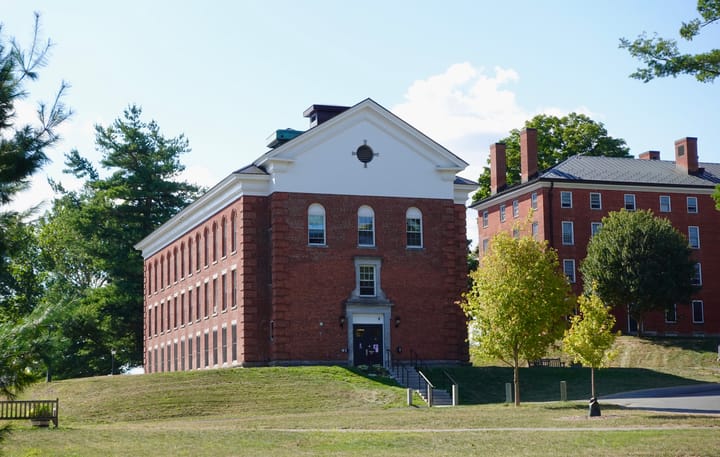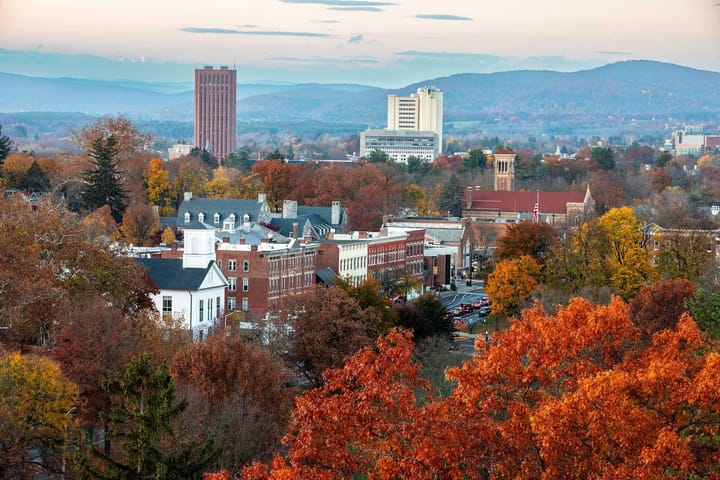College Makes $2.5 Million Donation to the Town of Amherst
On Thursday, the college made its largest donation to the Town of Amherst in recent years. Funds will be distributed to fire and police services, infrastructure, and the public school system, along with the construction of a new building.

On Thursday, President Michael Elliott announced that the college is making a $2.5 million contribution to the Town of Amherst, the largest transfer it has made in recent years.
The funds will be split into payments of $750,000 over the next three years, with funds distributed among fire and police services, infrastructure and public works, and the town’s public school systems. The agreement also included an additional one-time contribution for a capital project, which the town plans to use for a new fire station or Department of Public Works (DPW) building. This capital project is part of the town’s greater commitment to redevelopment, which includes two other building projects: the Jones Library and the new Fort River Elementary School.
The college had previously made multiple donations to the town, including a $1.3 million donation to Jones Library, Cooley Dickinson Hospital, and The Drake in 2023, all of which were one-time contributions to specific town institutions. This donation, however, is a three-year agreement with the municipality and marks the largest contribution to the school district in the past decade.
“[This multi-year agreement] represents our belief that a thriving town, including the school system, is essential for Amherst College to be successful,” Elliott said.
According to Elliott, an essential process that led to this donation was listening to the town’s needs. Town Manager Paul Bockelman said that the town had been in discussion with the college even before Elliott took office, and that “the change of leadership at the college brought a fresh approach and renewed interest in partnering with the town, which led to this agreement.”
In the past, the college has drawn criticism from some town residents over the fact that the college, like most colleges and universities, pays of property tax only faculty and staff housing and over the ongoing Hastings Apartment development in downtown Amherst, which some residents claim to have violated the town’s zoning bylaw.
Sarah Barr, advisor to the provost on campus initiatives and director of community engagement, regularly attended town council meetings and had several meetings with Bockelman leading up to the donation. Elliott and the school board also regularly met with Bockelman, which will continue on a regular basis, according to the agreement.
“It’s taken a while to get to this point, to understand where the college’s interests and values aligned with the town’s interests and values,” Barr said. “And for us, it’s about economic development, housing, public education, sustainability, and inclusion. The categories where we make the contributions really aligned with the town’s interests and the college’s.”
Elliott said the agreement included a provision for the distribution of some funds, but most were left for the town to decide. Since the town has not built a new building since the 1990s, the town council told the college that a new fire station and a renovated DPW building would be necessary within the next decade.
“The deficiencies of the central fire station, built in 1929, are numerous: from garage bays that do not meet the space requirements for modern fire and ambulance apparatus to living quarters for our firefighters that are abysmal,” Bockelman said. “The [DPW] has been operating out of an abandoned trolley barn.”
The town is also facing challenges such as ensuring housing availability and affordability for all income levels, prompting a recent change in its Housing Production Plan. In addition, Amherst-Pelham Regional Schools is under a relatively new superintendent and facing budgetary pressures.
“We do really want the school system to be healthy,” Elliott said. “The success of education is, first of all, aligned with our goals as an institution, and second of all, incredibly important in order for us to be able to attract staff and faculty.”
Aside from direct contributions, the college has been financially supporting the town by donating about 10 tons of food to local organizations annually and generating tourism from its museums. Most lectures at the college are open to the public and local high school seniors can take classes at the college for free. Some Amherst faculty also serve on town committees and teach courses that involve working with students in local schools.
“While the funds from Amherst College will support some of the challenges directly, our greater partnership with Amherst College continues to lead to innovative solutions and collaborative programs that help our community at large,” Bockelman said.
Elliott believes that engagement with the town community is an essential experience for Amherst students. The town makes Amherst “an attractive place to go to college” by providing arts, culture, and entertainment to its students while students can engage with town life by volunteering or serving on committees. To ensure that this experience continues, the college is “eager to keep working with the town” as it addresses challenges and plans economic strategies.
“For me as a student, the proximity to the town of Amherst was one of the reasons I chose Amherst College,” Elliott said. “[The town and the college] are pretty entangled, and I would love to see them becoming more so.”
The recent agreement will structure Amherst’s financial contributions to the town for the next three years as the college continues to look for ways to support the town’s efforts. When asked about how students could contribute their share to the town, Elliott gave a simple advice: Just be out there.
“Take a walk. Go look at the houses and the museums that are around us,” Elliott said. “Just shake your earbuds out, strap on your boots, and get out and look at the people who are our neighbors.”





Comments ()